The p62 P392L mutation linked to Paget's disease induces activation of human osteoclasts
- PMID: 19589897
- PMCID: PMC5224938
- DOI: 10.1210/me.2009-0066
The p62 P392L mutation linked to Paget's disease induces activation of human osteoclasts
Abstract
Mutations of the gene encoding p62/SQSTM1 have been described in Paget's disease of bone (PDB), identifying p62 as an important player in osteoclast signaling. We investigated the phenotype of osteoclasts differentiated from peripheral blood monocytes obtained from healthy donors or PDB patients, all genotyped for the presence of a mutation in the p62 ubiquitin-associated domain. The cohort included PDB patients carrying or not the p62 P392L mutation and healthy donors carrying or not this mutation. Osteoclasts from PDB patients were more numerous, contained more nuclei, were more resistant to apoptosis, and had a greater ability to resorb bone than their normal counterparts, regardless of whether the p62 mutation was present or not. A strong increase in p62 expression was observed in PDB osteoclasts. The presence of the p62(P392L) gene in cells from healthy carriers conferred a unique, intermediate osteoclast phenotype. In addition, we report that two survival-promoting kinases, protein kinase Czeta and phosphoinositide-dependent protein kinase 1, were associated with p62 in response to receptor activator of NF-kappaB ligand (RANKL) stimulation in controls and before RANKL was added in PDB osteoclasts. In transfected osteoclasts derived from cord blood monocytes, the p62 P392L mutation contributed to increased activation of kinases protein kinase Czeta/lambda and phosphoinositide-dependent protein kinase 1, along with basal activation of NF-kappaB, independently of RANKL stimulation. These findings clearly indicate that the overexpression of p62 in PDB patients induces important shifts in the pathways activated by RANKL and up-regulates osteoclast functions. Moreover, the most-commonly reported p62 mutation, P392L, certainly contributes to the overactive state of osteoclasts in PDB.
Figures
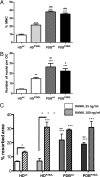
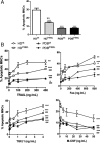
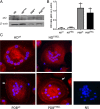
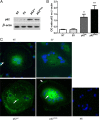

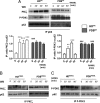


References
-
- Seitz S, Priemel M, Zustin J, Beil FT, Semler J, Minne H, Schinke T, Amling M2009. Paget’s disease of bone: histologic analysis of 754 patients. J Bone Miner Res 24:62–69 - PubMed
-
- Morissette J, Laurin N, Brown JP2006. Sequestosome 1: mutation frequencies, haplotypes, and phenotypes in familial Paget’s disease of bone. J Bone Miner Res 21(Suppl 2):P38–P44 - PubMed
-
- Cavey JR, Ralston SH, Hocking LJ, Sheppard PW, Ciani B, Searle MS, Layfield R2005. Loss of ubiquitin-binding associated with Paget’s disease of bone p62 (SQSTM1) mutations. J Bone Miner Res 20:619–624 - PubMed
Publication types
MeSH terms
Substances
Grants and funding
LinkOut - more resources
Full Text Sources
Medical
Molecular Biology Databases

